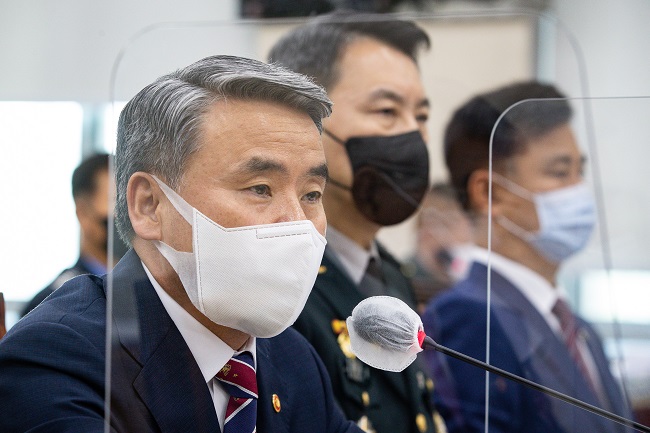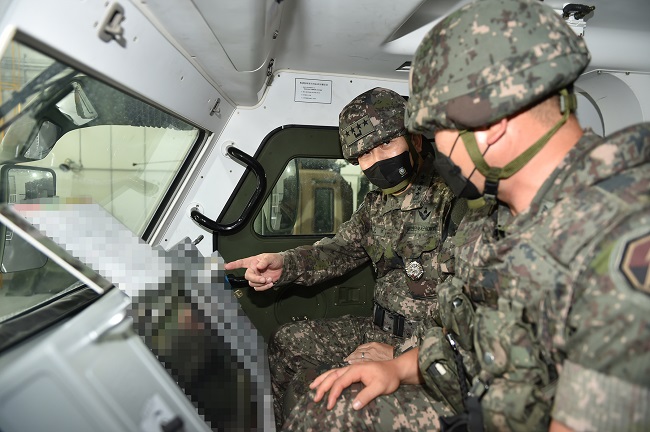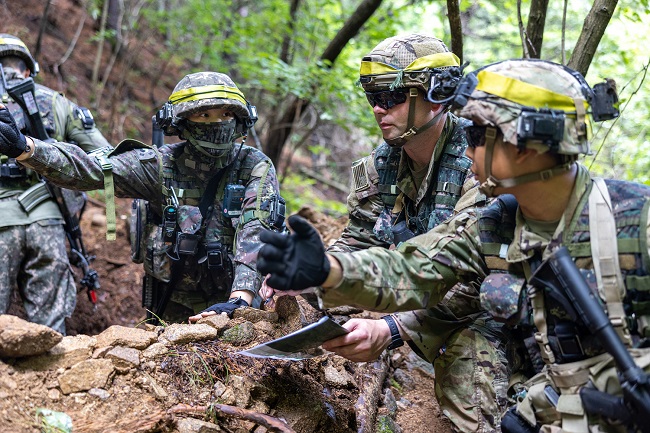
This photo, taken on Aug. 1, 2022, shows Defense Minister Lee Jong-sup speaking during a parliamentary session at the National Assembly in Seoul. (Pool photo) (Yonhap)
SEOUL, Aug. 3 (Korea Bizwire) — South Korea appears to be turning to a tried-and-true deterrence playbook marked by its arms buildup, a threat of “unsparing” punishment and scaled-up military drills as it faces evolving North Korean security challenges, analysts said Wednesday.
That playbook revolves around three Cs: military capabilities, communication to a recalcitrant North Korea and the credibility of its military strength — a confluence of requirements to rein in Pyongyang’s provocations, like a possible nuclear test, according to them.
Since the launch of the conservative Yoon Suk-yeol administration in May, Seoul has been striving to sharpen deterrence more conspicuously in a shift from the preceding liberal Moon Jae-in government known for its dogged pursuit of inter-Korean rapprochement.
The deterrence efforts came as Pyongyang went into overdrive with its push to develop new weapons, like tactical nuclear warheads, hypersonic missiles and submarine-launched ballistic missiles (SLBMs), not to mention intercontinental ballistic missiles (ICBMs).
But analysts noted that such efforts entail a caveat that tensions could flare anew, as seen in North Korean leader Kim Jong-un’s recent warning that the Yoon administration and its military would face “annihilation” in case of a “dangerous” attempt against the Kim regime.
“With North Korea forging ahead with its nuclear program while shutting the door for dialogue, South Korea appears to be doing what it can do from the toolbox,” Nam Chang-hee, professor of international politics at Inha University, said.
“From its ‘three-axis’ defense scheme to its efforts to cement bilateral security cooperation with the United States and trilateral collaboration involving Japan, it appears to be trying to employ measures from its security bucket list,” he added.

South Korea’s Joint Chiefs of Staff Chairman Gen. Kim Seung-kyum (L) visits a key Army unit for readiness inspection on July 8, 2022 in this photo released by his office.
Central to Seoul’s push to bolster its military capabilities is the three-axis system consisting of the Kill Chain preemptive strike platform; the Korea Massive Punishment and Retaliation (KMPR); and the Korea Air and Missile Defense system (KAMD).
For the Kill Chain portion, the South is pushing for a series of projects to acquire five surveillance satellites, medium altitude unmanned aerial vehicles and tactical ground-to-ground guided weapons.
Its projects to procure a ballistic missile early warning radar system, the long-range surface-to-air missile (L-SAM) interception system and the low altitude missile defense (LAMD) system are meant to comprise the KAMD piece.
For the KMPR portion, Seoul is pressing ahead with projects to deploy a 230-mm multiple rocket launcher and upgrade C-130H transport aircraft.
The efforts to build up defense capabilities have been backed by top Seoul officials’ sharp-tongued message against the North’s additional saber-rattling.
“If North Korea provokes, our military will definitely have it pay a hefty price for that through unsparing retaliation,” South Korea’s New Joint Chiefs of Staff Chairman Gen. Kim Seung-kyum said in his inauguration speech in July.
“(We) will inscribe even onto its bones (the message) that there’s nothing to gain from provocations.”

This undated photo, released by the South Korean Army, shows South Korea-U.S. combined drills in progress.
In firming up deterrence, the element of the bilateral alliance with the United States has also come into play.
The allies have recently publicized their moves to expand their combined military drills, which had been scaled back or suspended under the Moon administration intent on reengaging with Pyongyang.
In a parliamentary policy briefing last month, Seoul’s defense ministry revealed its plan to resume regiment-level or larger-scale combined field training programs between the South and the U.S., including aircraft carrier strike drills and amphibious landing training.
In addition, the ministry has disclosed the detailed plan for the allies’ newly named Ulchi Focus Shield training, which it said involves drills on repelling attacks and staging counteroffensives and counterattacks.
The allies have also been working on enhancing the credibility of their combined deterrence capabilities in an apparent gesture to highlight that their vows to remain ready to “fight tonight” are not empty talk.
An example along that line is their joint endeavor to resume the allies’ high-level Extended Deterrence Strategy and Consultation Group (EDSCG) suspended in 2018.
The EDSCG is a key policy dialogue that Seoul has been counting on to enhance the credibility of America’s extended deterrence — its stated commitment to mobilizing a full range of its military capabilities, including its nuclear options, to defend its Asian ally.
Despite all these efforts, questions linger over whether a deterrence strategy mainly reliant on the allies’ conventional weapons systems would be able to counter the North’s nuclear threats and whether the U.S. security commitment would continue to remain strong.
(Yonhap)






